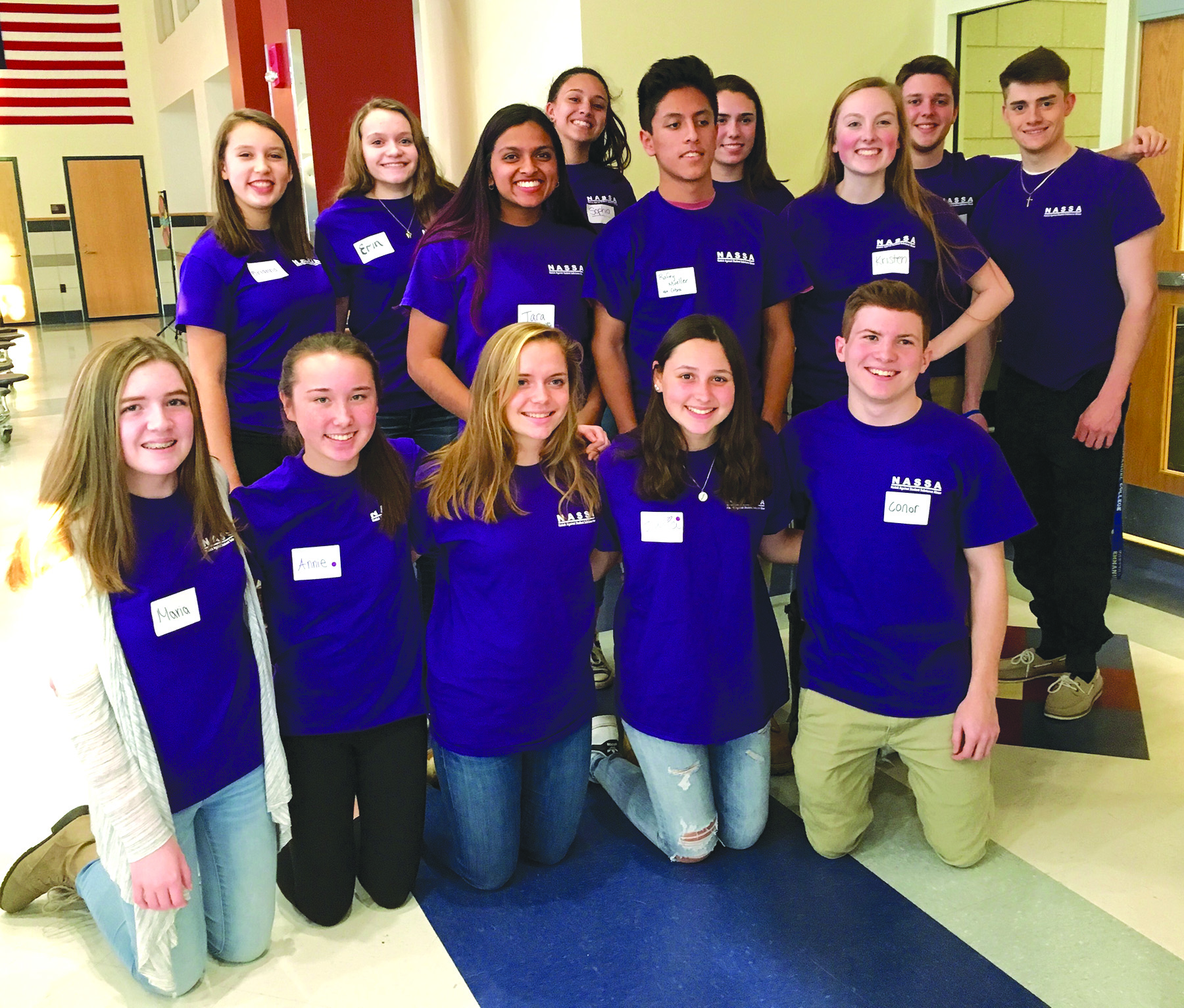Through the cooperation of public service members, businesses, educators and other community members, Natick Together for Youth (NTY) has kept a close watch on substance abuse since 1985. NTY analyzes the most up-to-date research of Natick’s student population, and evolves to respond to the needs of the community, tailoring its services towards the demographics that need the most assistance.
Building Towards
Prevention
The Natick Alcohol and Drug Advisory Council (NADAC) was the first iteration of what is now NTY. In 1985, Massachusetts Governor Michael Dukakis issued the “Governor’s Alliance Against Drugs,” and parents and educators responded. NADAC was formed to educate the community about substance abuse, and provide healthy alternatives.
The After-Prom Party was created by NADAC in 1992 to help teens stay safe after their senior festivities, and remains a tradition that marks this period in NTY’s history. However, the organization experienced many changes over the next two decades that shifted their approach to substance abuse prevention.
Additional sectors of the town of Natick became involved in the effort in 2009, including town management and business representatives. After some name-changes and re-arrangements, the title Natick Together for Youth was settled on. NTY became more active than ever with its new support system, including some of the original NADAC members as well as many new members.
In 2011, NTY was awarded a Drug Free Communities (DFC) federal grant, which set a new precedent for the group. One of its requirements is to use only evidence-based strategies, encouraging NTY to monitor the statistics of substance abuse through the MetroWest Adolescent Health Survey, which is administered every two years in Natick’s public middle schools and high school.
Youth Statistics
The survey has revealed the use of cigarette, alcohol, and drug use among student populations since 2006. NTY identifies the upward or downward trends of each substance for middle school and high school students, as well as the demographic that is currently most at-risk for each drug.
“The good news is that Natick has made substantial progress in certain areas. For instance, tobacco and alcohol use among teens have dropped significantly.” Catherine Sugarman, Executive Director for NTY, said. The most dramatic decreases were alcohol and cigarette use in high school. From 2006 to 2014, cigarette use dropped from 13.9 percent to 5.9 percent, and alcohol use declined from 66 percent to 52.4 percent.
“Areas of concern still exist, however,” Sugarman said. Though marijuana use fell slightly among high school students (from 34 percent in 2006 to 30 percent in 2014), it rose among middle school students from 2 percent to 3 percent in this same time period. However, the opioid crisis is what NTY is most concerned with.
“According to the Natick Police Department, as of July 2016, there have been 15 opioid overdoses this year, two of which were fatal,” she continued. “Most of these overdoses have occurred among young adults between the ages of 19-35.”
Peer-To-Peer
A significant change for NTY has been the addition of a peer leadership group, which was established in 2014. Natick Against Student Substance Abuse (NASSA) has 25 active members that model and promote a drug and alcohol-free lifestyle. NASSA finds creative ways to spread their message throughout Natick’s public schools and community.
They host an annual educational night for middle school students, during which high school students share their reasons for not using substances and provide tips for navigating high school without drugs or alcohol, and each spring, they create a pamphlet to distribute to local liquor stores reminding patrons not to buy alcohol for minors.
NASSA also displayed a banner on which they had garnered 1,000 signatures from middle and high school students pledging not to use drugs and alcohol. “In addition to educating their peers in Natick, NASSA members also do an incredible job of educating adults within the coalition about what youth in Natick think and experience,” Sugarman said.
Upcoming Events
NTY will have an exhibit called Hidden in Plain Sight as part of Natick Days, which takes place on Saturday, Sept. 10 in downtown Natick between 10 a.m. and 3 p.m. It imitates a teenager’s bedroom, and contains items that could indicate the use of substances. For parents, it is an opportunity to learn about the red flags that could indicate that their child is using drugs or alcohol.
The organization will also host a meeting at the Natick town hall about underage drinking, which will take place in late October (the date is to be announced). On Saturday, Dec. 18 at 6 p.m., the annual Interfaith Vigil for Those Who Have Lost Their Lives to Addiction will take place at the First Congregational Church of Natick.
NTY also wants to inform the community that September is National Recovery Month, and the Massachusetts Organization of Addiction Recovery (MOAR) will be hosting events at the Massachusetts State House.
There are numerous ways to be involved, either to help youth maintain a substance-free lifestyle, or assist young family or friends who are struggling.
“When individuals, families and institutions within a community are disconnected and fragmented, there are greater chances of youth falling through the cracks,” Sugarman explained. “But when they come together, relationships are built and programs are strengthened in ways that tighten the formal and informal community networks with which young people come into contact.”
For more information about NTY, visit www.naticktogetherforyouth.org.

Issue Date:
September, 2016
Article Body:
